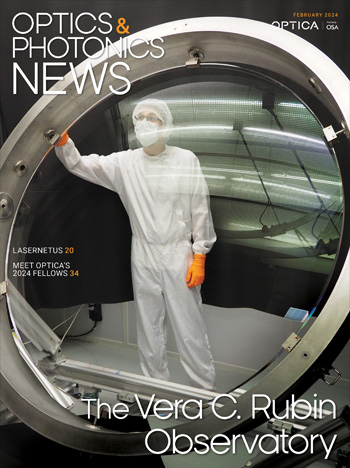
July 1993 Issue
Feature Articles
The Greening Of Optics
Manufacturers of optics, lasers, electro-optics, and fiber optics may think of their industries as environmentally safe, but Richard Reibstein of the Massachusetts Office of Technical Assistance points out that "there are no clean industries." Although the fabrication processes for optics require strict tolerances in terms of purity, many of the solvents, dyes, gases, and raw materials used in the manufacturing process are classified as hazardous materials.
by Susan M. ReissThe Changing Nature Of Lens Design
Lens design is fundamental to the development of most modern optical technology. Efforts to understand the way in which lenses work led to new designs that were realized as commercial successes and provided the resources to develop new methods for design. Aberration theory developed as the foundation upon which lens designs were created. The exact analysis of images by tracing a number of rays was too tedious in the first third of this century, as the only approach to ray tracing was the use of logarithmic tables and handwritten calculations. Each designer had to squeeze the maximum information about the lens from each ray traced. Tracing a meridional ray might proceed at about a ray surface per 15 or 20 minutes, and skew rays were hardly ever traced at all.
by R. R. ShannonStandards And The Environment
Since the environment is often mentioned in the news these days, it may be of interest to look at environmental issues affecting optical standards. How can standards writing priorities be adjusted to ensure that due attention is being paid to environmental issues? How well do various optical systems perform in less than ideal environments?
by Robert E. ParksSharing The Fun Of Optics—Working With Groups Of Youngsters
This article stems from a very gratifying experience presenting an optics workshop to my Girl Scout troop— around 25 active, boisterous sixth graders. I wasn't sure what they would think of having to do optics at the end of a long day when they were ready for fun. As it turns out, they loved it. One of the girls went home and excitedly told her mom about it, saying that she'd never realized before that science could be fun. The girls seemed fascinated and came up with lots of good questions and experiments of their own. Even my scout who is learning- and emotionally-disabled, and generally doesn't participate or speak much, participated in everything and came back to me later asking where she could buy a laser.
by Janet ShieldsLaser Cooling And Trapping For The Masses
There have been dramatic advances in the techniques for cooling and trapping neutral atoms using laser light. In particular, the use of inexpensive diode lasers and the vapor-cell trap have significantly reduced the complexity and cost of trapping atoms, which has opened the field to many additional researchers. Atomic densities of 1011 atoms/cm3 have been obtained with temperatures of a small fraction of a millikelvin. In this article, we describe laser trapping techniques and discuss current applications of this technology, ranging from frequency and wavelength standards to basic physics research.
by Sarah L. Gilbert and Carl E. Wieman
![A multiplexed image of a human tonsil acquired. [NIAID] using the iterative bleaching extends multiplexity (IBEX) method.](https://opnmedia.blob.core.windows.net/$web/opn/media/images/articles/2024/0424/departments/202404-cover-web.jpg?ext=.jpg)

